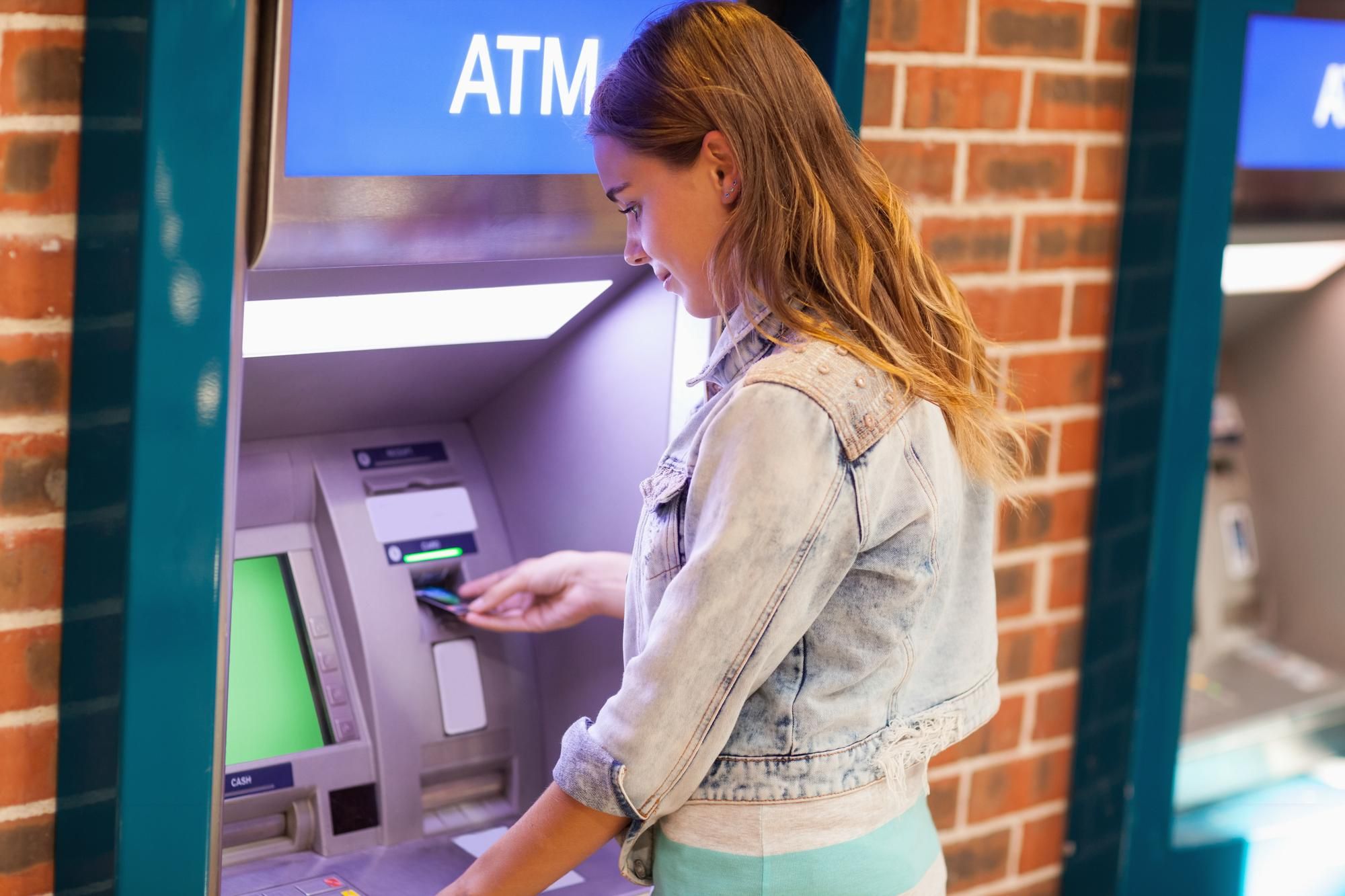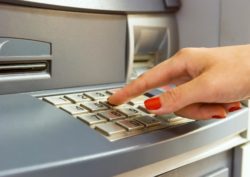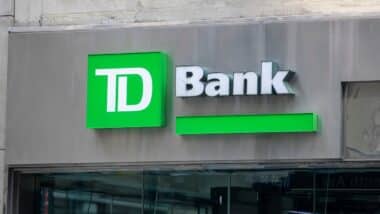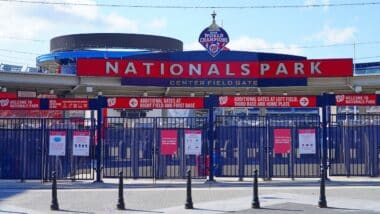
Being able to transfer funds quickly and efficiently is essential for so many of us today, which is why the ability to electronically transfer funds fairly is protected by the Electronic Fund Transfer Act (EFTA).
If you were improperly charged ATM fees from an out-of-network machine, this may have been a violation of the EFTA, and you may be able to file a lawsuit under the EFTA and pursue compensation.
Electronic Fund Transfer Act Definition
The Electronic Fund Transfer Act Regulation E is a federal law passed by Congress back in 1978 in an effort to protect Americans from issues that could occur with the more and more widespread use of automated teller machines (ATMs), and electronic banking. The EFTA, also known simply as Regulation E, is implemented by the Federal Reserve Board.
Electronic fund transfers are transactions using electronics—computers, phones, or even a card’s magnetic strip—to grant the necessary authorization for a financial institution to either credit or debit an account. There are a number of different types of electronic fund transfers, including the use of debit cards, ATMs, point-of-sale transactions, direct deposits, automated clearinghouse (ACH) systems, and automatic bank account withdrawals.
Since the EFTA was passed, the use of paper checks has been in steady decline. That being said, many consumers find that using physical paper checks is a good way of keeping hard evidence of a payment. The EFTA is intended to give consumers the same kind of confidence in their electronic transactions as they would have in the paper checking system.
The purpose of the Electronic Fund Transfer Act is to provide requirements at the federal level for when transaction errors occur for these kinds of fund transfers. This includes requirements for banks and credit unions, as well as for the consumers themselves. The EFTA’s focus is on making sure that consumers are adequately informed about their financial transactions, as well as their rights to check for and resolve any errors.
One of EFTA’s most important protections is that it provides a way to correct transaction errors that may occur. Under the EFTA’s regulations, consumers are allowed to challenge errors that occur and then have them corrected within 45 days while incurring limited financial penalties.
The EFTA also provides requirements for the essential information that banks and credit unions must provide for their customers regarding electronic fund transfers. This includes a summary of liability regarding unauthorized transactions and transfers, contact information for who to contact in the case of an unauthorized transaction, information on the types of transfers that can be made and any associated fees, a summary of the consumer’s rights, a summary of the institution’s liability to the consumer, and more.
It also provides guidelines for how consumers can recover from a lost or stolen card. Having a card lost or stolen can be at the very least frustrating, and at the worst can result in fraud, identity theft, or straight financial theft. Fortunately, the EFTA also limits the liability a consumer faces from a lost or stolen card.
How Does the Electronic Fund Transfer Act Protect Consumers?
The EFTA protects consumers from errors that can occur through multiple methods of electronic fund transfer.
Online account usage, fund transfers, and bill payments are protected by the EFTA.
With ATM usage, the EFTA authorizes consumers to access ATMs 24/7, though consumers may be charged a fee if the ATM is owned or operated by a financial institution different than the user.
The use of direct deposit is becoming increasingly widespread, offered by most banks. Direct deposit allows consumers to preauthorize deposits into the account (most commonly, payroll checks or government benefits) or recurring bill payments out of it. The EFTA gives consumers the right to put a stop to preauthorized transfers at any time, even if contract terms oppose this.
The EFTA also covers the authorization of fund transfers over the phone—banks are required to confirm the caller’s identity with questions specific to their account.
Consumers can access their accounts via their banks’ online portals in order to monitor their accounts, transfer funds, and pay bills.
Debit cards issued by a financial institution are protected by the EFTA, but many other types of cards are specifically excluded from the EFTA. These include gift cards, stored-value cards, credit cards, and prepaid phone cards.
The EFTA also enables a business to convert a paper check into an electronic payment by scanning it and capturing the required information, at which point the paper check itself becomes null and void.
How Does the Electronic Fund Transfer Act Regulate ATM Fees?
ATM fees can be charged not just when a consumer makes a withdrawal using one of these machines, but for any transaction, including deposits or balance checks, if the machine is outside of their network or if the ATM belongs to a different bank.

These charges can range from about $1 to $5 or so, and vary from bank to bank, as well as by account type. According to a 2019 Bankrate report, the average cost for a withdrawal from an out-of-network ATM was $4.72—a new record. Indeed, these fees are steadily increasing from year to year, and are up 33 percent over the last decade, according to Forbes.
In some cases, consumers may actually be hit with two separate ATM fees—one, a surcharge by their bank for using an out-of-network ATM, and the other, a fee from the ATM operator itself.
At this point, the average ATM surcharge has increased year over year for fifteen years in a row. In 2019, the average in-network ATM fee was $3.09.
According to Greg McBride, chief financial analyst at Bankrate quoted by Forbes, these numbers can only be expected to increase.
“What will be interesting over the next year or two isn’t whether fees will keep climbing,” McBride says, “but how fast they climb.”
ATM fees may differ between banks and credit unions. These fees are both common and, for the most part, legal—as long as financial institutions follow specific EFTA regulations. Most importantly, the existence and amount of the ATM fee must be disclosed to the consumer at the time the transfer takes place.
Fortunately, some banks offer free access to ATMs or even waive or reimburse out-of-network ATM fees for certain account holders. Indeed, approximately 42 percent of financial institutions will waive an ATM fee if you sign up for direct deposit.
Some financial institutions reimburse ATM fees at the end of each statement cycle, but often limit or restrict the amount they will reimburse at a time.
For instance, some may limit reimbursement to $10 (about 2–3 out-of-network ATM withdrawals) each month, and others may only offer reimbursement to certain account holders, such as students, or those with a daily average balance of a certain amount.
ATM fee reimbursement is a method by which financial institutions pay customers back for ATM fees that occurred at out-of-network ATMs, particularly when an in-network ATM was not as readily available in the area.
Many people may not be aware of ATM fee reimbursement. The practice is most common with online banks, since these banks generally don’t have physical ATMs, and customers have to rely on out-of-network ATMs instead. The institution may electronically credit the total amount of ATM fees incurred (or, up to the set limit) back to the customer at the end of each statement cycle.
Check your bank to see what its ATM fee reimbursement policies and requirements are.
Electronic Fund Transfer Act Penalties
If a consumer reports their ATM or debit card lost or stolen within two days, their liability is limited to $50 under the EFTA. Within 3 to 60 days, the liability is much higher—as much as $500. If it takes more than 60 days to report, the liability is unlimited.
A number of banks and credit unions may have violated the regulations of the EFTA and are currently under investigation, including but not limited to the following financial institutions:
- Valley National Bank
- TriCounties Bank
- Fremont Bank
- Investors Bank
- Brookline Bank
- BNB Bank
- Kearny Bank
- Cobalt Credit Union
- Banterra Bank
- Old Second National Bank
- Heartland Financial
What Potential Damages Can You Claim?
If you were charged improper ATM fees—you were not notified of the fees when you used an ATM machine—you may be able to file or join a lawsuit and pursue compensation. The financial institution responsible may be liable for damages. This can include both compensation for the consumer’s actual losses, as well as potential punitive damages against the financial institution that imposed the illegal bank fees.
A growing number of consumers are turning to class action litigation against financial institutions that they allege charged illegal bank fees or hidden fees with the use of an ATM.
Filing a lawsuit can be a daunting prospect, so Top Class Actions has laid the groundwork for you by connecting you with an experienced attorney. Consulting an attorney can help you determine if you have a claim, navigate the complexities of litigation, and maximize your potential compensation.
Join a Free ATM Fees Class Action Lawsuit Investigation
If you were charged ATM fees without notification when you used an ATM machine, you may qualify to join this ATM fees class action lawsuit investigation.
This article is not legal advice. It is presented
for informational purposes only.
ATTORNEY ADVERTISING
Top Class Actions is a Proud Member of the American Bar Association
LEGAL INFORMATION IS NOT LEGAL ADVICE
Top Class Actions Legal Statement
©2008 – 2025 Top Class Actions® LLC
Various Trademarks held by their respective owners
This website is not intended for viewing or usage by European Union citizens.















One thought on What Does the Electronic Fund Transfer Act Do?
Please give me a call to discuss a EFTA claim for one of my clients. Please call at 917-478-1012.